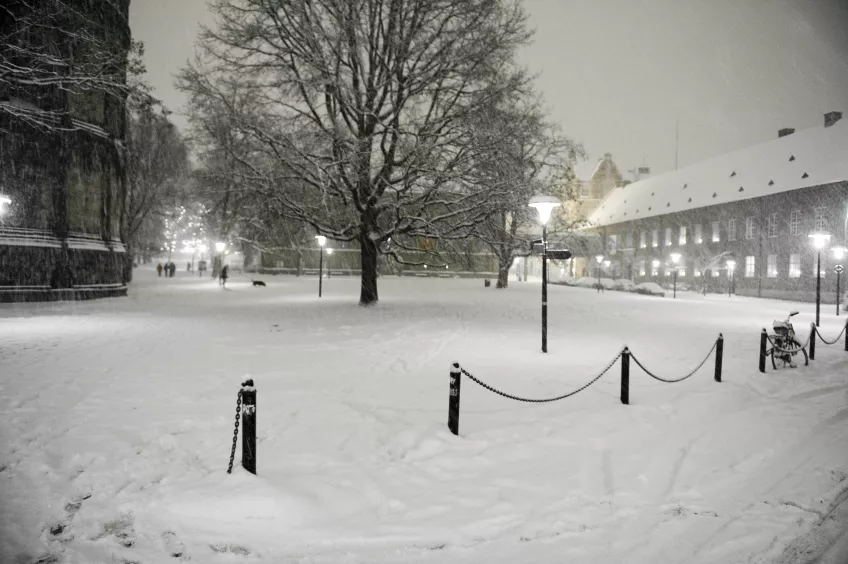Heating
LU Accommodation’s aim is to provide 20°C (68°F) during the day and 18-20°C (64-68°F) at night, between the hours of 22.00-06.00. The reason for this is to optimize your comfort and your economy, as a substantial part of your rental cost is due to the level of heating in your accommodation and building.
How does the heating work?
The heating at your housing area is centrally regulated and the radiators are not always on. The radiators are only turned on centrally when the outside temperature is below a certain degree. This means that the indoor temperature is based on the outside temperature. Please also note that the room temperature in your room is often raised by the building’s ventilation system.
The heating in your apartment comes from hot water that circulates through the radiators. A thermostatic valve on each radiator ensures that the correct amount of hot water is circulated in relation to the temperature in the room.
You can control the temperature in the room by turning the thermostatic valve and thereby increasing or decreasing the water circulating in the radiator. However, the heating system is limited to a maximum of about 20°C (68°F), according to our heating policy.
The general temperature in your room should be 20°C (68°F). Please note that this is based on a temperature reading carried out at a height of one meter from floor level in the middle of your room, during the day. We do not offer the service of making the temperature higher than 20 degrees as this is not environmentally friendly.
In certain housing areas the heating system in the building will lower the level of heating (by a couple of degrees) during the night in order to save energy and in order to create a room temperature which is suitable for tenants whilst they sleep.
Tips
-
Do not cover or obstruct the radiator with anything (for example a desk, blinds, couch)
-
Always keep the thermostat on the maximum. Unscrew the thermostat counterclockwise until it stops!
-
Never turn the thermostat below “level 2”.
-
Do not keep your windows open for the whole day. Air the room quickly and thoroughly instead of having the window open all day long. Turn off the radiator and open the window wide for a short time. If you have more than one window, by all means open them so that you get a cross-draught. After a few minutes, close the windows and turn the radiator on again.
-
Do not plug or obstruct the ventilation system. The lack of air circulation will both affect air quality and temperature.
-
Keep an eye on the sealing strips around your windows and doors. If you feel a draught, the strips may need to be replaced.
-
Close your curtains/blinds at night, as this will help keep out the cold.
If the temperature is lower the 20°C (68°F) after 24 hours of you following our tips then you should make a fault report. We will then leave a thermometer in your room to measure your temperature for 24 hours.
Are the radiators cold?
When the weather changes and it gets cooler outside, you can sometimes feel that it is a little colder indoors. If the radiators are cold it is usually because they do not begin to heat until the indoor temperature is below 20°C (68°F), regardless of the outdoor temperature and the temperature of the elements.
Ventilation
The volume of air is regulated by Swedish law and is checked at regular intervals by the property owner. Fresh air is often steered through vents in the outer walls or under windows. The ventilation system can be designed in different ways, but often there is an air extractor in the form of a cooker hood, fan or ventilation unit in kitchens and bathrooms.
During the cold part of the year, draughts may be felt from the fresh air vents, but the vents are located to provide the best possible ventilation in the home. Do not block or cover vents, otherwise air will enter through other openings and upset the indoor climate and the fine adjustments that have been made to ensure correct air exchange to keep your housing at 20°C (68°F).

Contact Details
Researcher Accommodation
Address:
Professorsgatan 1B, Lund
Telephone hours
Telephone number: +46 46 222 08 00
Phone hours:
Monday-Friday
10:00 - 12:00
luacc [at] service [dot] lu [dot] se (luacc[at]service[dot]lu[dot]se)
NB: If you want to apply for housing please use the booking request form. Requests through e-mail will not be accepted.
Disturbances
For disturbances outside of office hours, please call LU Security 046-222 08 00, and press 1.


